When traveling to Quảng Nam, besides exploring leisure spots, resorts, and historical sites, visitors also have the chance to find inner peace at the region’s famous temples. In this article, FVG Travel introduces several revered temples frequently visited by both locals and tourists.
1. Chùa Cầu – The iconic temple in Hội An, Quảng Nam
- Address: Nguyễn Thị Minh Khai Street, Minh Khai Ward, Hội An Ancient Town, Quảng Nam
In 2006, the image of Chùa Cầu was featured on the 20,000 VND banknote, underscoring its historical and cultural significance. Its graceful architecture continues to inspire poets, photographers, and countless visitors to Quảng Nam.
Known as the Japanese Bridge, Chùa Cầu is believed to have been built by Japanese merchants from the late 16th to early 17th century. It is one of the first three independent national monuments in Hội An and remains one of Quảng Nam’s most iconic tourist attractions. The bridge-temple spans a small canal between Trần Phú and Nguyễn Thị Minh Khai Streets, opening onto the Thu Bồn River at the southwest edge of the ancient town.
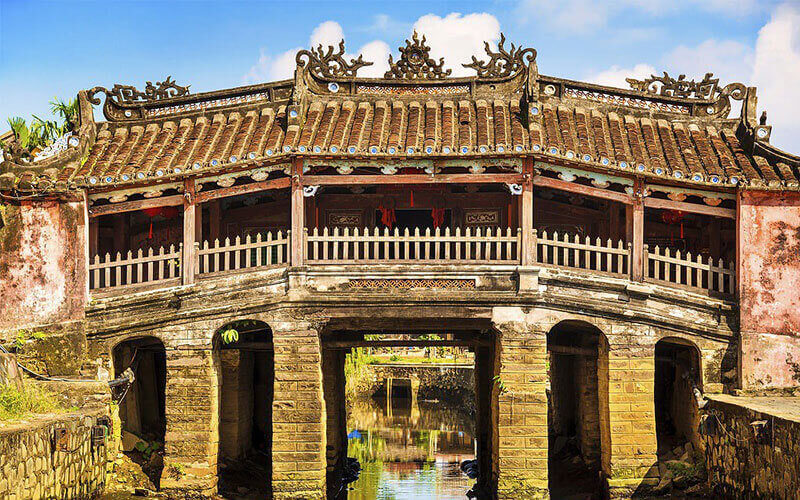
2. Phuc Kien Pagoda – A Famous Temple in Quang Nam That Attracts Tourists
- Address: 46 Tran Phu Street, Cam Chau Ward, Hoi An City, Quang Nam Province
Located in the heart of Hoi An Ancient Town, the Phuc Kien Assembly Hall (also known as Phuc Kien Pagoda) has become a long-standing cultural and spiritual symbol of this region. Recognized by the government as a National Historical and Cultural Relic in 1990, this site not only draws numerous visitors but also holds a significant place in the spiritual life of the local community.
The pagoda features vibrant colors and intricately carved details, creating a stunning architectural masterpiece. More than just a sacred place of worship, the Phuc Kien Assembly Hall serves as a vital cultural hub for the Hoa (Chinese) community in Hoi An. It hosts spiritual rituals, traditional festivals, and unique cultural events, contributing to the preservation and promotion of Quang Nam’s distinctive cultural identity.
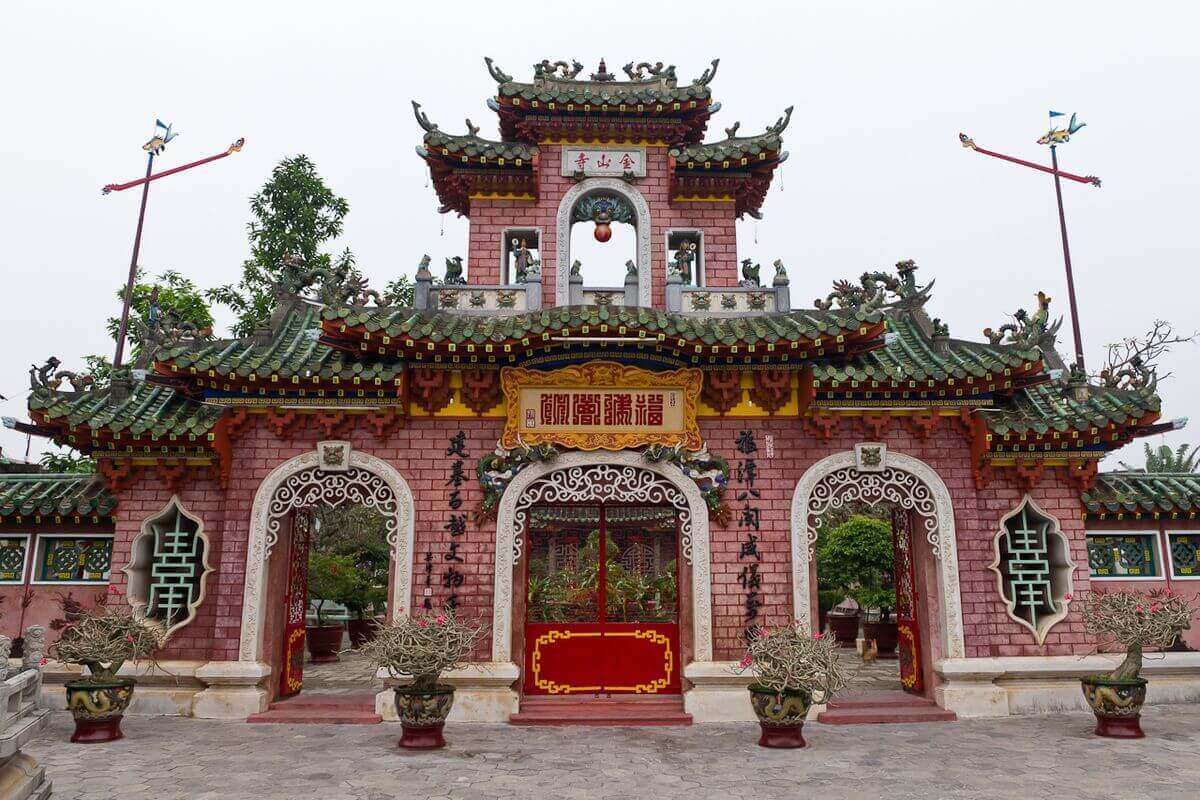
3. Ba Lam Cung Holy Mother Temple – A Sacred Shrine in Quang Nam
- Address: A So Hamlet, Ma Cooih Commune, Dong Giang District, Quang Nam Province
Ba Lam Cung Holy Mother Temple – also known as the Shrine of the Forest Princess – is a prominent spiritual destination nestled amidst the majestic mountains of Ma Cooih Commune, Dong Giang District, within the Dong Giang Heaven’s Gate Ecotourism Area. The temple draws visitors not only for its solemn and traditional architecture but also for the hope of bringing peace, prosperity, and good fortune to the soul. The journey to the temple involves climbing over 500 stone steps through the heart of the forest, offering a meaningful escape from the hustle and bustle of daily life and allowing visitors to immerse themselves in a serene, spiritual atmosphere.
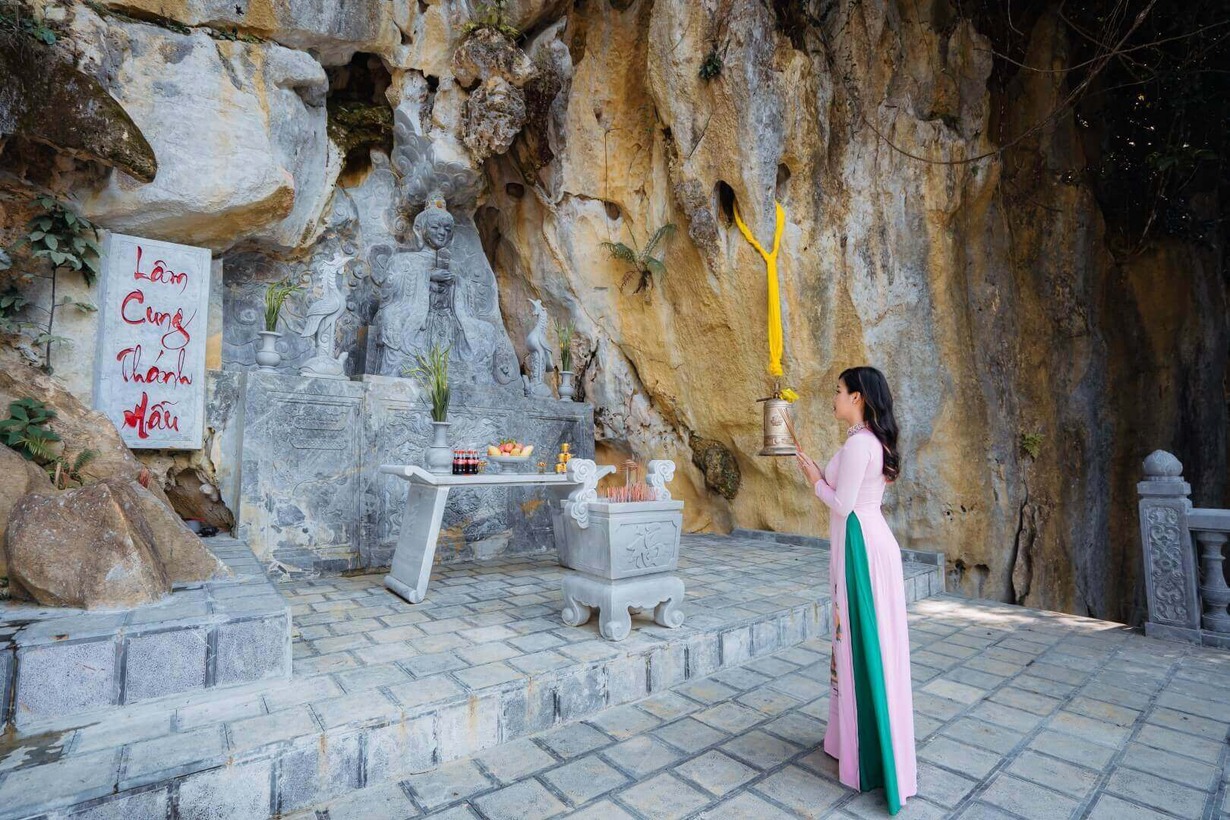
Located about 100 km from Da Nang and 120 km from Tam Ky, Ba Lam Temple is considered one of Quang Nam’s most renowned Buddhist sanctuaries—an esteemed pilgrimage site where visitors can immerse themselves in a profound blend of spiritual reverence and majestic natural surroundings.
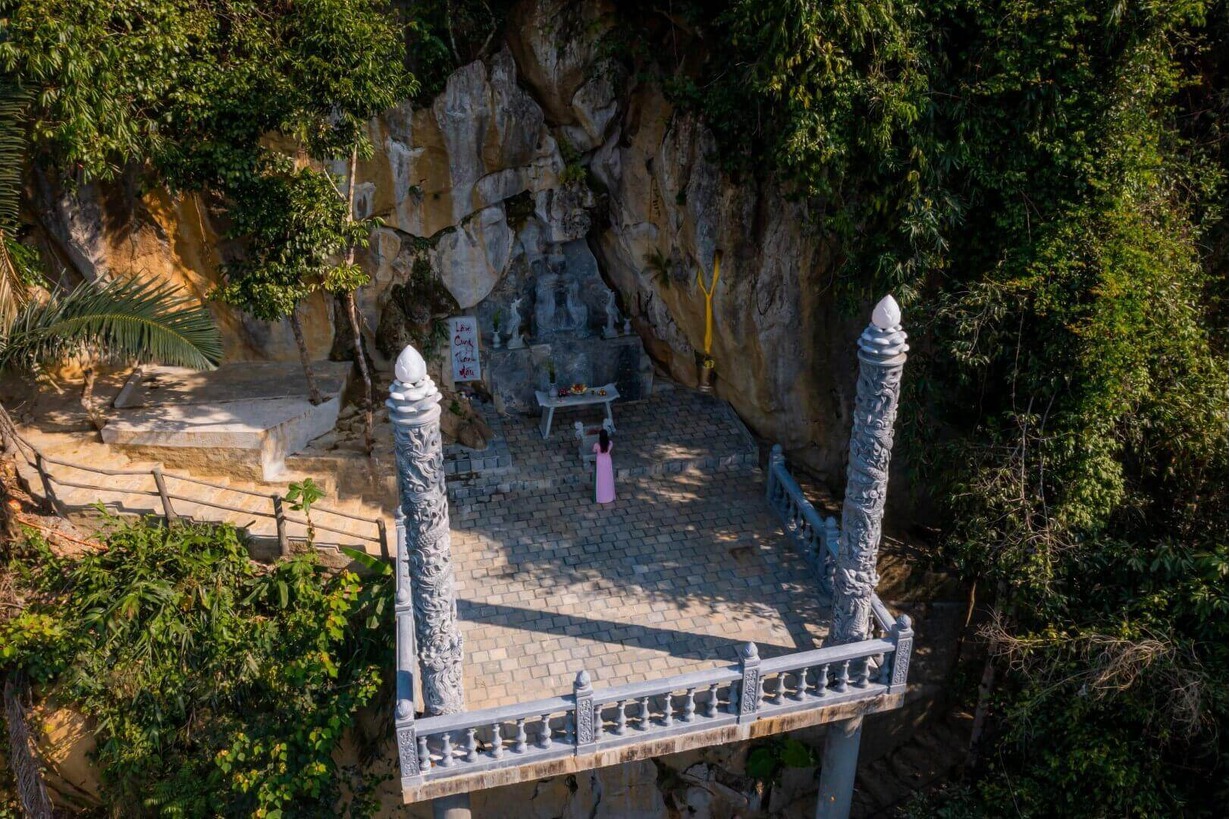
4. Vien Giac Pagoda
- Address: 34 Hung Vuong Street, Cam Pho Ward, Hoi An
Vien Giac Pagoda is another revered temple frequently visited by locals. Established in 1841, it has endured centuries of historical upheaval yet still preserves its cultural significance, serving as an essential spiritual destination for tourists exploring Hoi An.
Architecturally, the pagoda showcases classic Vietnamese Buddhist design—featuring gracefully curved tiled rooftops, finely carved decorative motifs, and solemn statues of the Buddha. The serene atmosphere, accompanied by the gentle tolling of temple bells, allows pilgrims and visitors alike to momentarily escape busy daily life and fully experience its calming sacred ambiance
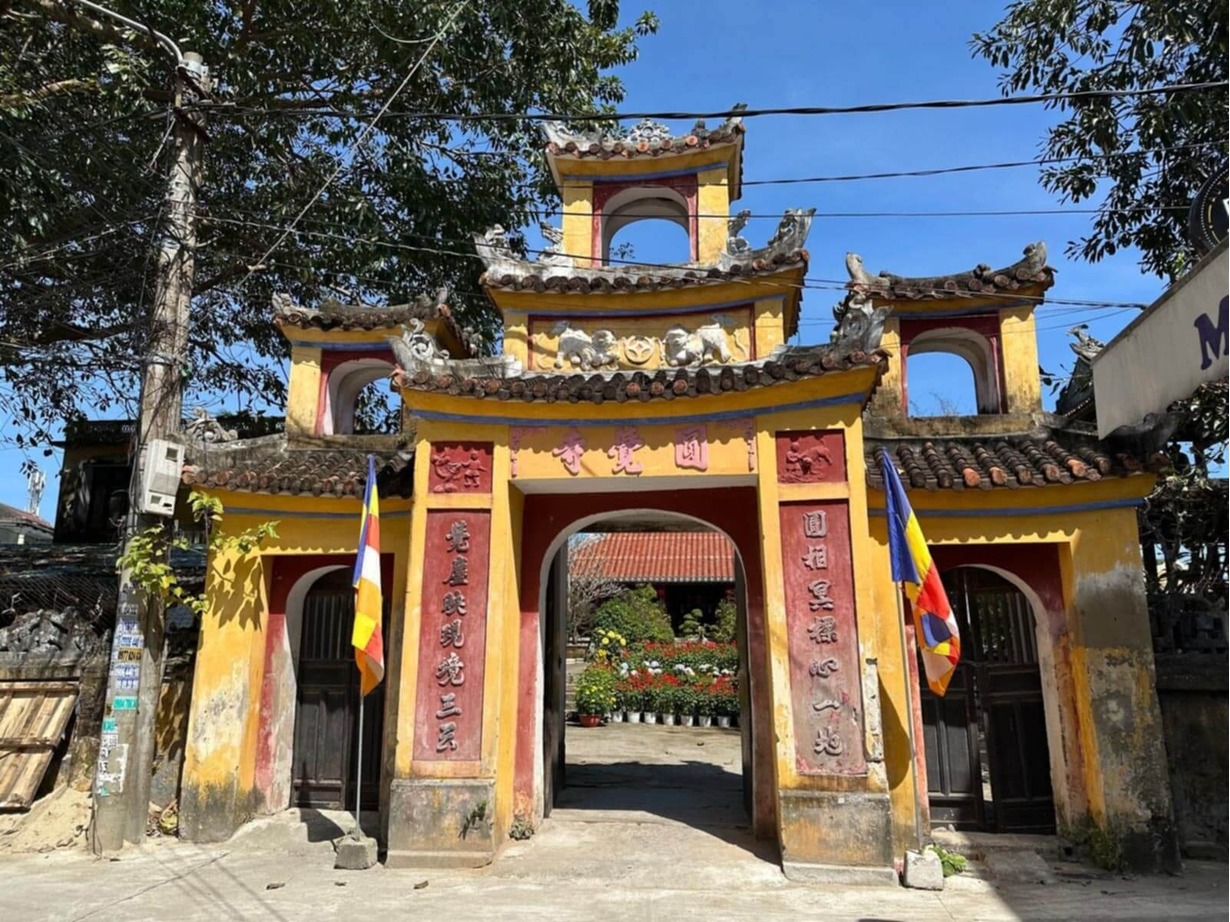
5. Hai Tang Pagoda – A Famous Ancient Pagoda in Quang Nam
- Address: Xom Cam, Bai Lang, Cu Lao Cham, Tan Hiep Commune, Hoi An City, Quang Nam Province
Located on the beautiful Cu Lao Cham Island, Hai Tang Pagoda is a sacred destination that attracts numerous visitors who come to pray, explore, and admire its unique ancient architecture.
The name “Hai Tang” holds deep symbolic meaning – “Hai” represents the vast ocean, while “Tang” refers to the profound treasure of Buddhist scriptures. The pagoda serves as a spiritual sanctuary where visitors can find inner peace and reflect on noble spiritual values.
Upon entering the pagoda, you will immediately feel a sense of tranquility. Its design reflects traditional Vietnamese Buddhist architecture, featuring gracefully curved tiled roofs, solemn Buddha statues, and intricately carved motifs – all coming together to create a harmonious blend of nature and spirituality.
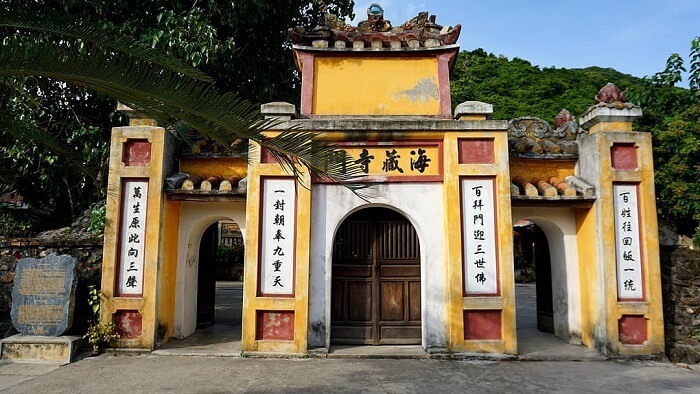
6. Phap Bao Pagoda – A Renowned Spiritual Destination in Quang Nam
- Address: No. 07, Hai Ba Trung Street, Hoi An
Phap Bao Pagoda is one of the most well-known spiritual sites in Hoi An, attracting both domestic and international visitors. It is considered the largest pagoda in the Hoi An area, offering a serene atmosphere with its open design that harmonizes beautifully with the surrounding nature.
Beyond being a spiritual sanctuary, Phap Bao Pagoda is also a fascinating cultural attraction in Hoi An. Visitors can admire the pagoda’s unique architecture and learn about the history and development of Buddhism in the region. Regularly held Buddhist ceremonies and traditional festivals further enrich the cultural experience for travelers exploring this sacred site.
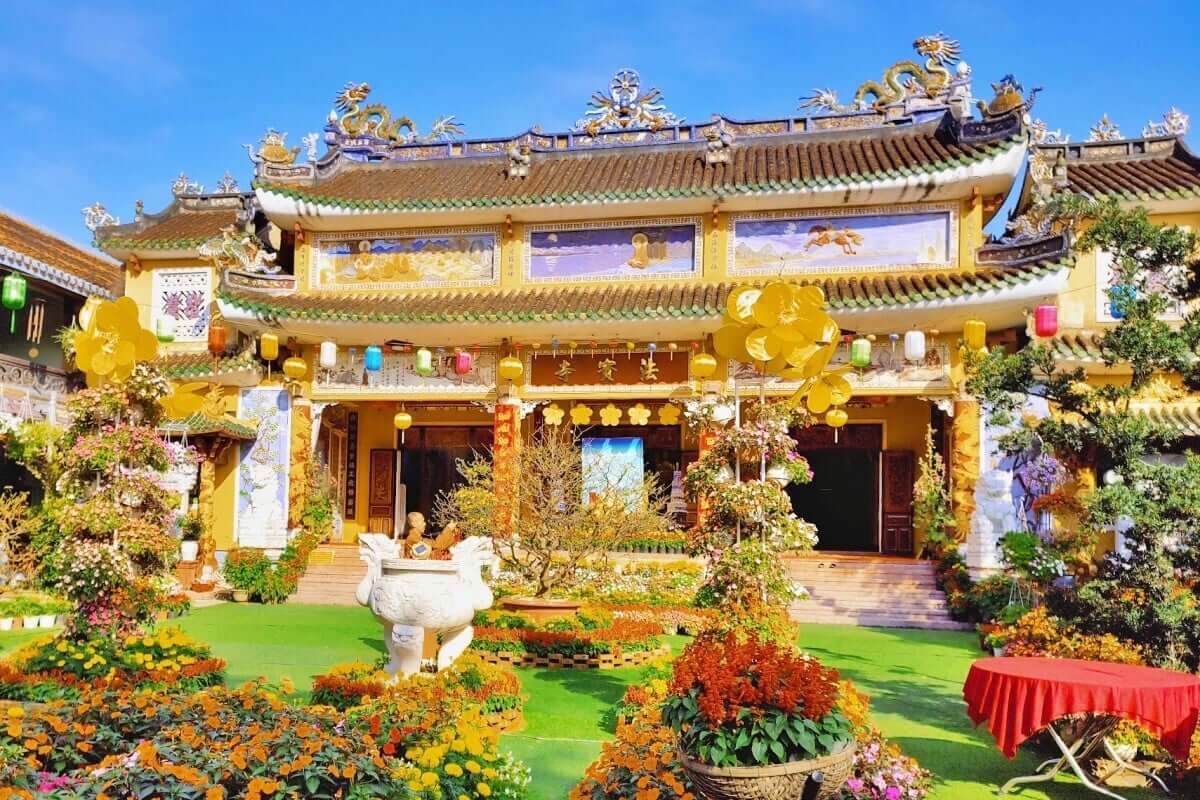
7. Chuc Thanh Pagoda – The Oldest Pagoda in Quang Nam
- Address: Zone 7, Tan An Ward, Hoi An City, Quang Nam Province.
Chuc Thanh Pagoda is one of the most renowned pagodas in Quang Nam, located in Cam Pho, Hoi An. This historic site is the birthplace of the Chuc Thanh Zen Sect, a branch of the Linji (Lam Te) school of Zen Buddhism. From Da Nang, visitors can take the Non Nuoc route and travel approximately 30 km to reach Hoi An.
The pagoda is designed in the shape of the Chinese character "tam" (三), symbolizing harmony. Its architecture blends traditional Vietnamese and Chinese styles. The main hall enshrines the Three Buddhas (Tam The), Maitreya (Di Lac), and the Eighteen Arhats, with a statue of Avalokitesvara Bodhisattva (Quan The Am) standing in the courtyard. With its distinctive architectural style and profound spiritual significance, Chuc Thanh Pagoda is a must-visit destination in your journey to discover famous pagodas in Quang Nam.

8. Phuoc Lam Pagoda
- Address: Thanh Ha commune, Cam Ha ward, Hoi An city, Quang Nam province
Phuoc Lam Pagoda is a famous pagoda in Quang Nam, located in Cam Ha ward, Hoi An city. It was founded in the 18th century by Zen master An Triem and is considered a significant spiritual site. The pagoda was originally built in the 17th century by Master Minh Luong – one of the two venerable monks who laid the foundations of Buddhism in Hoi An – as a place to worship the Buddha.
The architecture of Phuoc Lam Pagoda reflects strong East Asian influences. The layout is shaped like the Chinese character “門” (Môn), symbolizing a gate, and includes the three-entrance gate (tam quan), courtyard, main hall, great hall, and ancestral house. The main hall features three compartments and two wings, along with two bell and drum towers, all designed in traditional style. This creates a solemn and peaceful atmosphere for visitors coming to worship and explore the temple.
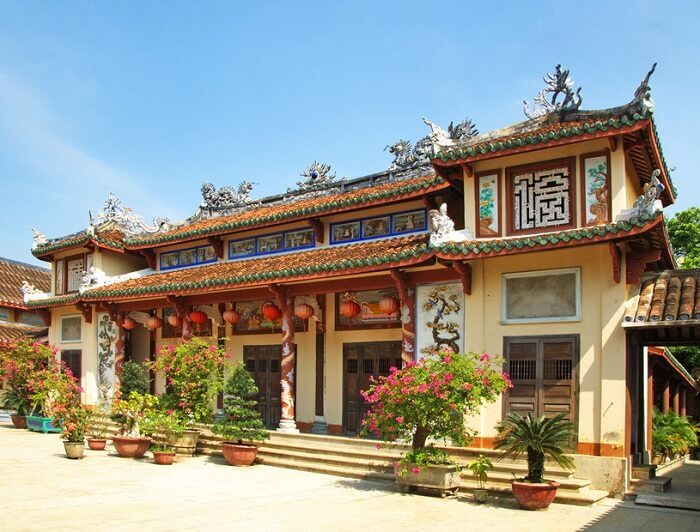
9. An Lac Pagoda in Hoi An
- Address: Nguyen Du Street, Thanh Ha Ward, Hoi An, Quang Nam
Located by the gentle Thu Bon River, about 4 km from Hoi An Ancient Town, An Lac Pagoda is one of the most beautiful and well-known pagodas in Quang Nam. Built in 1966, the pagoda originally started as a small, cozy shelter that provided care and support for those less fortunate. Over the years, despite facing many challenges, it has been renovated and expanded into a prominent Buddhist site in Hoi An. Today, An Lac Pagoda welcomes a large number of Buddhists and visitors who come here to pray and explore each year.
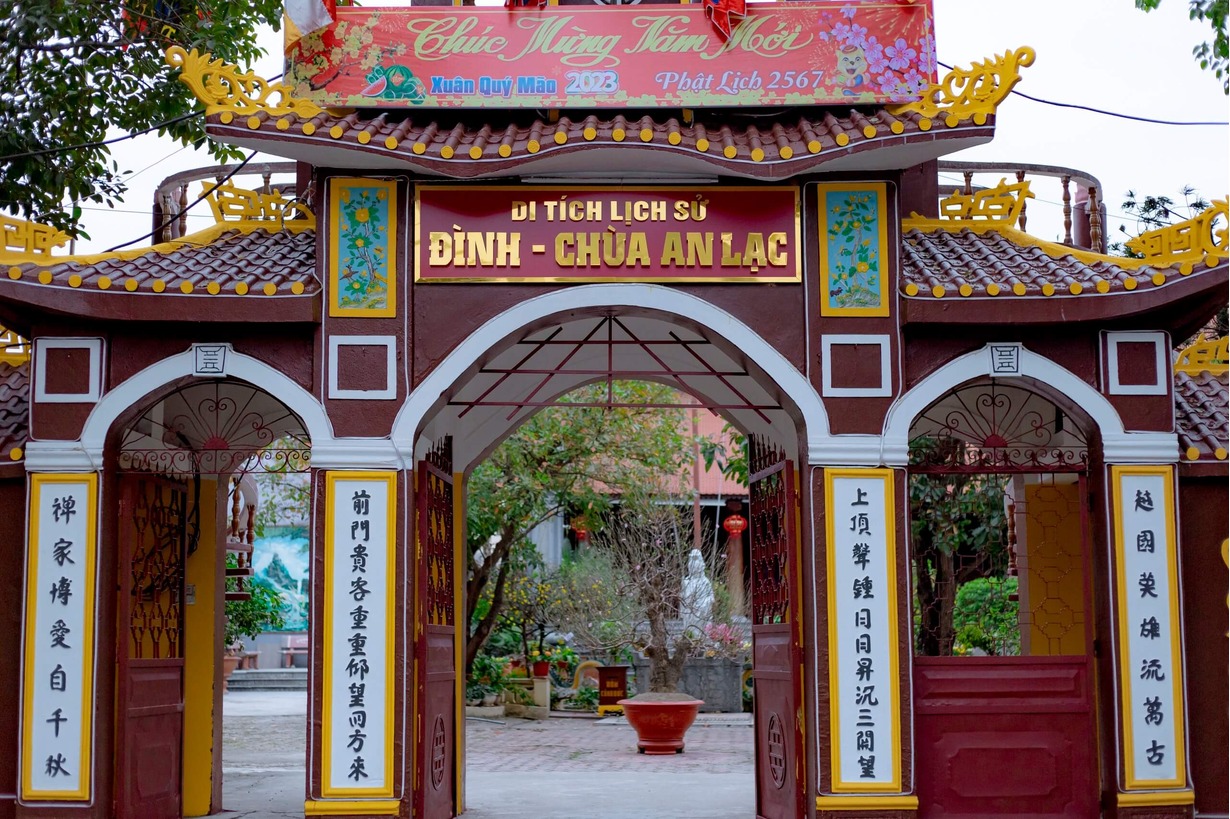
10. Cổ Lâm Pagoda
- Address: Located in Lâm Tây hamlet, Đại Đồng commune, Đại Lộc district, Đà Nẵng province.
Perched atop Am Thông hill in Hà Nha hamlet, Đại Đồng of Đại Lộc district, Cổ Lâm Temple—also known as Tổ đình Cổ Lâm—has stood majestically for nearly 250 years. Recognized as the ancestral temple of the Lâm Tế Chúc Thánh Zen sect, it remains a sacred pilgrimage site visited by thousands of spiritual seekers and tourists in Quảng Nam.
Over the centuries, the temple endured numerous challenges. It underwent major restoration in 1985, and in 2008 was officially designated a provincial-level historical relic. In 2010, thanks to the efforts of Venerable Thích Như Thọ and donations exceeding 12 billion VND, Cổ Lâm Temple was beautifully revived, restoring its dignified and solemn architecture as seen today.
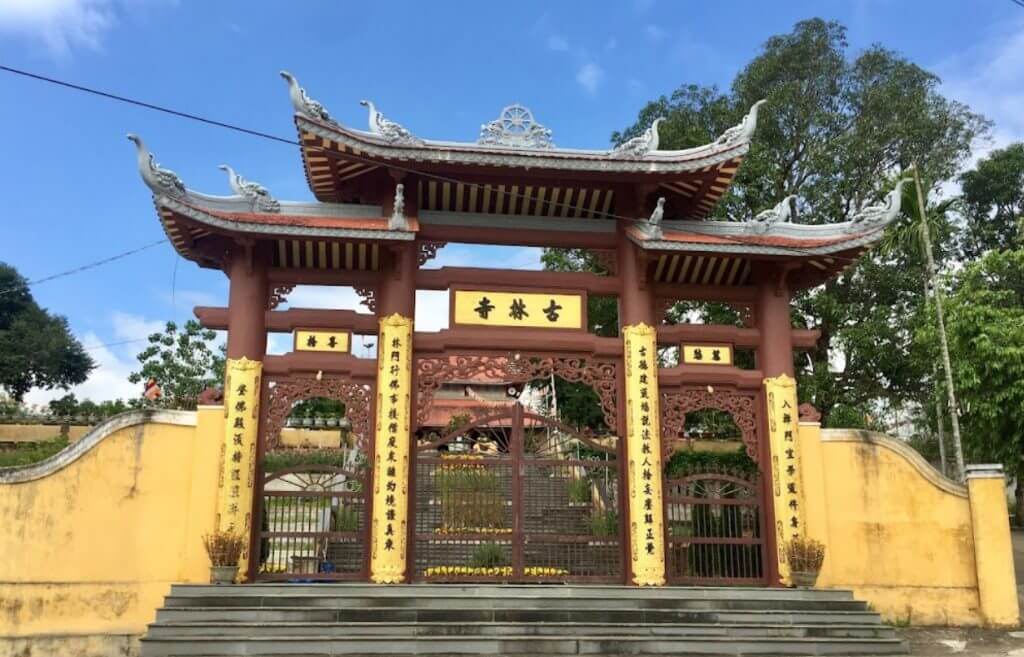
Some Important Notes When Visiting the Famous Temples of Hội An, Quảng Nam
When visiting the renowned temples in Quảng Nam, please observe the following guidelines to show respect and preserve the sacred atmosphere:
- Choose modest, respectful attire—no short skirts, sleeveless tops, or revealing clothing.
- Keep your voice low and refrain from loud conversations or boisterous behavior on temple grounds.
- Never touch Buddha statues, offering bowls, altars, or any sacred items without permission.
- Maintain cleanliness: do not litter or disturb the temple’s visual harmony.
- If you bring offerings, keep them simple and appropriate.
- Learn about local cultural, religious, and ritual practices of the community before your visit.
Exploring a famous temple in Quảng Nam is more than a spiritual journey—it’s an opportunity to gain deeper insight into the region’s culture and history. Each temple preserves the enduring legacy of Buddhism and reflects Vietnam’s traditional values. When in Quảng Nam, don’t miss the chance to visit these ancient temples—from their graceful tiled roofs and majestic Buddha statues to the intricate, symbolic carvings and architectural details.








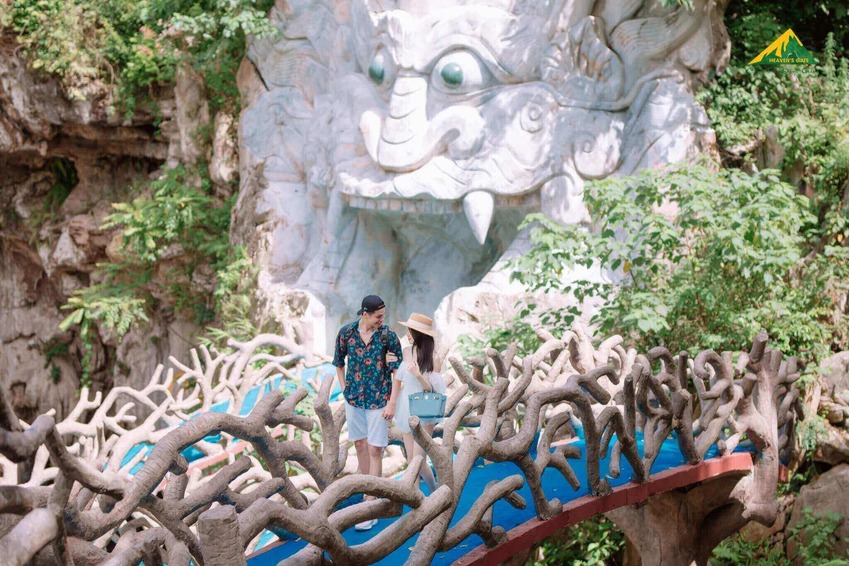





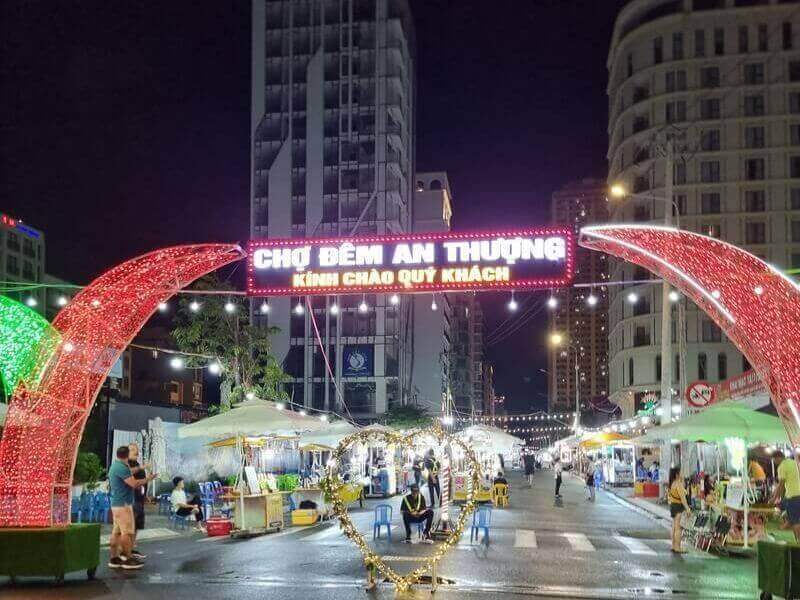


 Loading ...
Loading ...